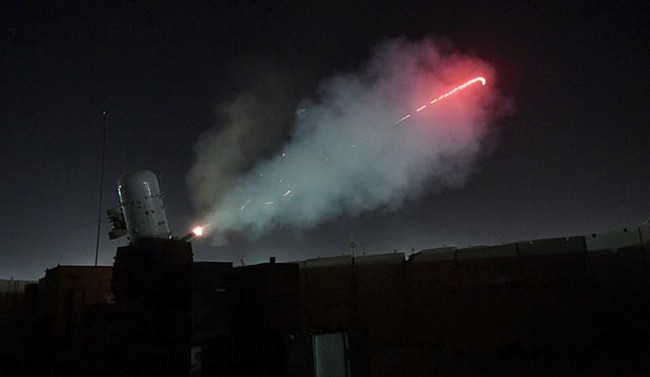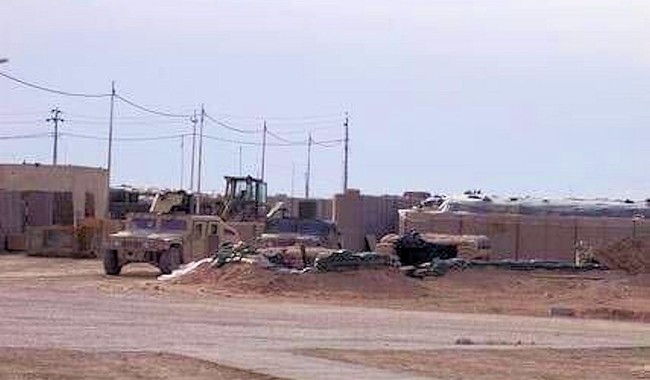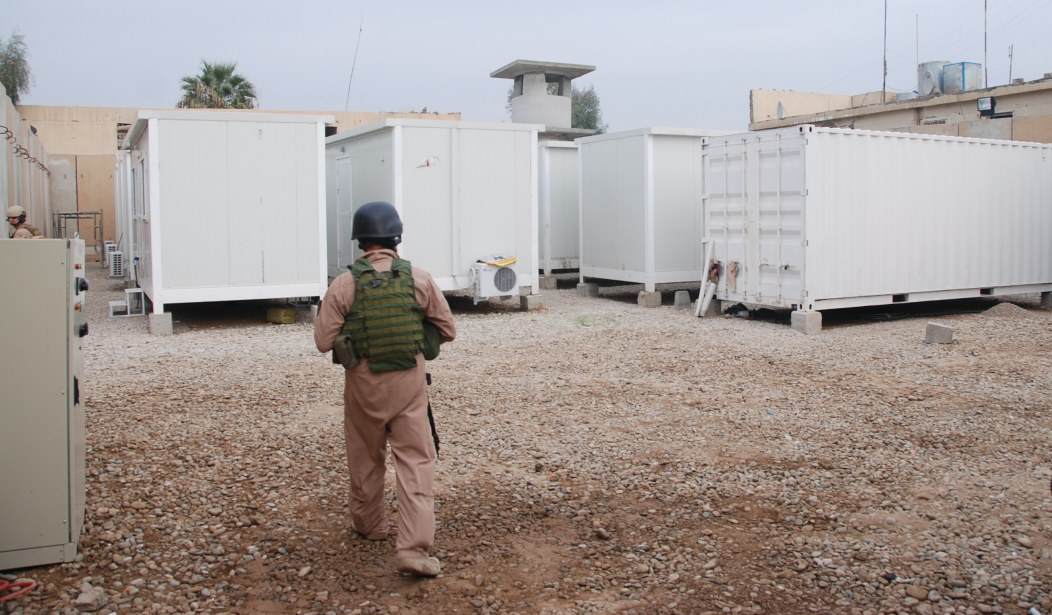The recent attack in which an Iranian-made drone was able to penetrate an American base's anti-air defensive systems, kill three soldiers, and wound 47 more might have exposed a deadly vulnerability in the base's air defense systems and living quarters for American troops. The base, officially known as "Tower 22," is located in Jordan and sits on the border between Iraq and Syria.
Officials state that Tower 22's air defense systems were operational at the time of the attack, however, due to some confusion, the system possibly mistook the Iranian drone for what it believed was an incoming American drone returning to the base.
See: Suicide Drone That Killed Three American Soldiers Slipped Past Air Defenses, Mistaken for US Drone
Normally, American aircraft, including drones, all have radar transponders known as "IFF" (Identification Friend or Foe) emitters that send radar signals to a tracking radar system that identifies the aircraft is friendly and at the same time it allows the system to identify hostile targets that are not transmitting the correct signal or any signal at all.
It is unknown what actual air defense system the base was operating. However, it is very common for bases to be equipped with a 20mm Land-Based Phalanx Weapon System, or CRAM (Counter Rocket, Artillery, and Mortar) which is a land-based variant of the U.S. Navy's Phalanx Close in Weapons System (CWIS), which is a 20mm rotary cannon with an attached tracking and targeting radar unit that can track and engage close in airborne threats with 20mm shells fired at over 5,000 round a minute.
 The fact that enemy drone operators were able to purposefully place their drone in the same position as a returning American drone in order to use the American drone as cover so it could evade the anti-air defense systems the base was operating at the time exposes a major weakness or vulnerability in the bases anti-air defense systems. While evading detection and either jamming or confusing air defense systems is not a new concept, it does renew the need for system redundancies. Additionally, if the American drones being operated out of Tower 22 were being flown in a pattern that could be predictable, like departing and returning at the same times, it would further exacerbate that vulnerability. If that were the case, it would not be difficult for an opposing force to time their attack at the same time as returning drones.
The fact that enemy drone operators were able to purposefully place their drone in the same position as a returning American drone in order to use the American drone as cover so it could evade the anti-air defense systems the base was operating at the time exposes a major weakness or vulnerability in the bases anti-air defense systems. While evading detection and either jamming or confusing air defense systems is not a new concept, it does renew the need for system redundancies. Additionally, if the American drones being operated out of Tower 22 were being flown in a pattern that could be predictable, like departing and returning at the same times, it would further exacerbate that vulnerability. If that were the case, it would not be difficult for an opposing force to time their attack at the same time as returning drones.
An additional concern with this recent attack is the American forces housing units. Tower 22 is an American facility that sits in a larger compound that houses both Jordanian and American forces; however, the Jordinans provide the outer security for the compound. The drone struck an American part of the compound that contained the housing and lounging facilities for American personnel. In the Defense Department's statement, the housing was described as "container housing units," which are usually repurposed shipping containers or what are known as "conex boxes." These units are just corrugated steel or aluminum boxes that have beds and A/C units in them.
They are not armored, nor do they provide any form of ballistic protection from either a direct or indirect impact of an artillery or mortar round, rocket, or weaponized drone. If any of these weapons or warheads directly penetrated these units, they will be severely damaged, if not totally destroyed. Furthermore, a direct penetrating hit would cause a significant amount of collateral damage and injury to everyone inside. The amount of overpressure from just a few pounds of high explosive in a small contained space is enough to kill without even being struck by shrapnel. If not killed by the blast, the pressure wave would be enough to burst eardrums, cause severe concussion injuries, or more.
During my second deployment to Iraq, we lived in wooden C-huts, which were wood-framed rectangular structures built by our engineers. The roofs of the C-huts were lined with three layers of sandbags and the sides had a solid wall of sandbags and a row of Hesco barriers, which were a row of large empty boxes that were filled with sand when fully assembled. These features afforded us inexpensive yet very effective protection against incoming mortar and rocket fire, which we received almost daily. There were multiple occasions where one of our C-huts took a direct hit from mortar and rocket fire, with no damage to the building, outside of shredded sandbags which were replaced shortly after. You can see in the picture below, just how much protection we had.
 This begs the question of why these bases or compounds are not afforded the same protections. This recent deadly attack is not an isolated incident either. The attack marks the 165th time an American outpost or military base of operations has been targeted by drones and other weapons since October 17th, 2023. This is also not the first time an enemy drone has successfully evaded or penetrated the anti-air defensive systems of an American base. These are very serious concerns that should be addressed immediately due to the still looming threat of further attacks.
This begs the question of why these bases or compounds are not afforded the same protections. This recent deadly attack is not an isolated incident either. The attack marks the 165th time an American outpost or military base of operations has been targeted by drones and other weapons since October 17th, 2023. This is also not the first time an enemy drone has successfully evaded or penetrated the anti-air defensive systems of an American base. These are very serious concerns that should be addressed immediately due to the still looming threat of further attacks.














Join the conversation as a VIP Member